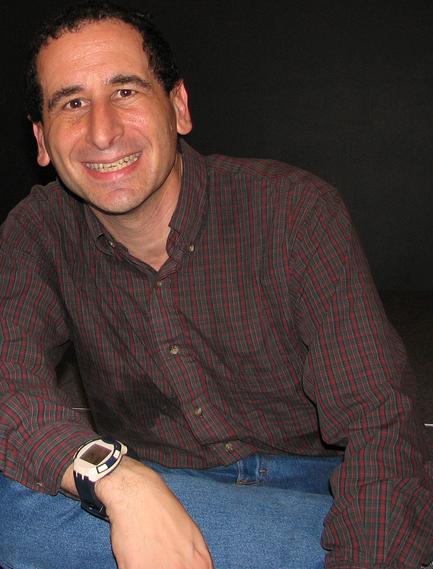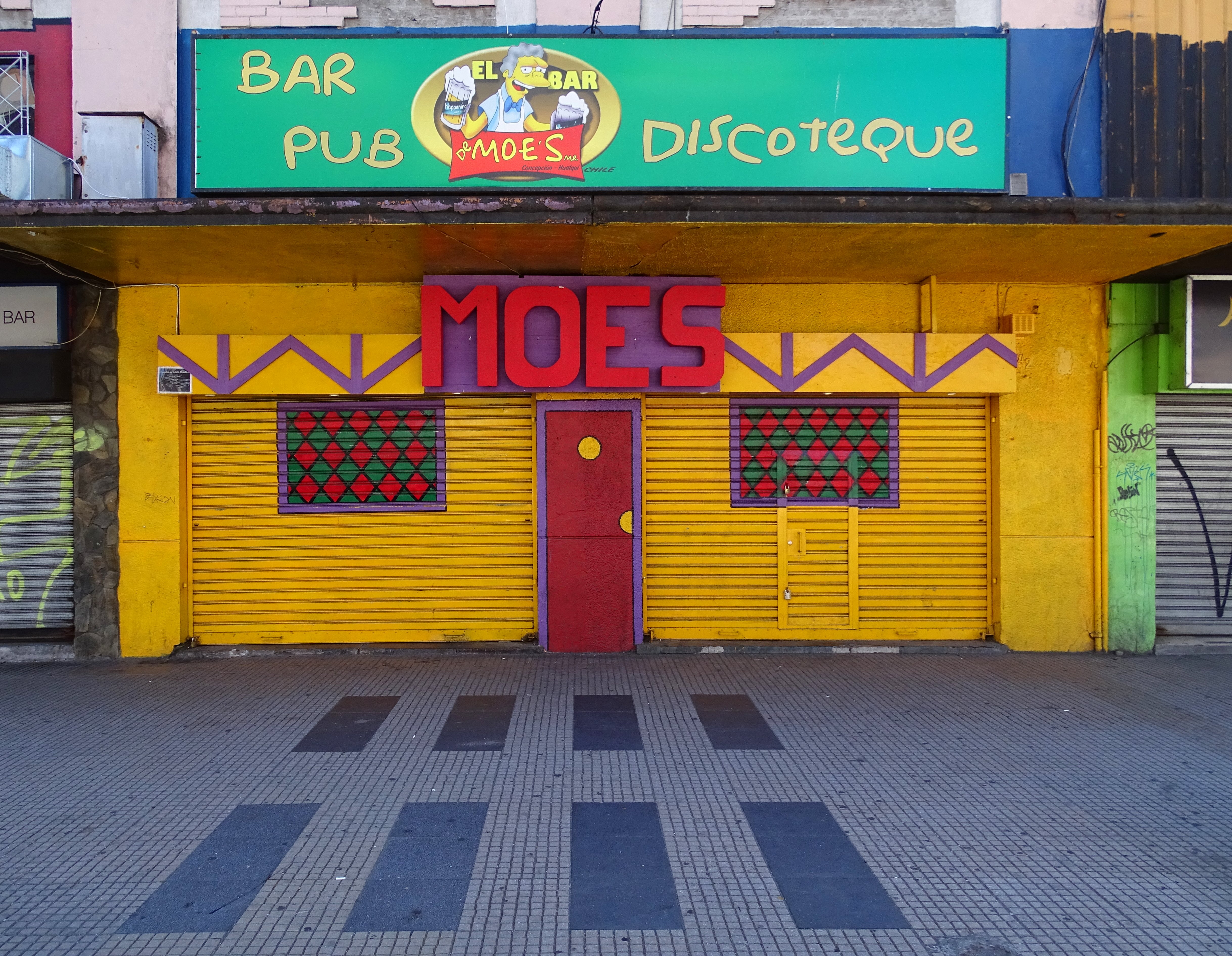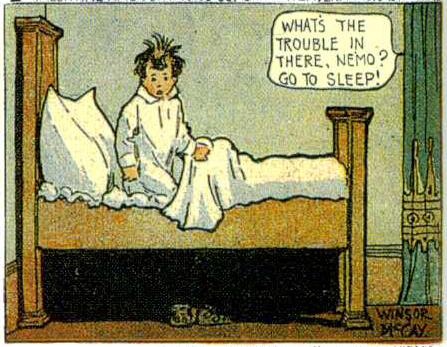|
Lisa's Pony
"Lisa's Pony" is the eighth episode of the third season of the American animated television series ''The Simpsons''. It originally aired on the Fox Network in the United States on November 7, 1991. In this episode, Homer goes drinking at Moe's Tavern instead of buying a new reed for Lisa's saxophone, making her flop at the school talent show. Desperate to win back his daughter's love, Homer gives Lisa the one thing she has always wanted: a pony. Homer struggles with two jobs to cover the cost of sheltering and feeding it. After seeing the sacrifices he endures to pay for it, Lisa decides to part with her pony. The episode was written by Al Jean and Mike Reiss and directed by Carlos Baeza. Lunchlady Doris, a recurring character on ''The Simpsons'', made her first appearance on the show in this episode. "Lisa's Pony" features cultural references to films such as ''The Godfather'' and '' 2001: A Space Odyssey'' and the comic strip ''Little Nemo in Slumberland''. Since airing, the ep ... [...More Info...] [...Related Items...] OR: [Wikipedia] [Google] [Baidu] |
Al Jean
Alfred Ernest Jean III (born January 9, 1961) is an American screenwriter and producer. Jean is well known for his work on ''The Simpsons''. He was raised near Detroit, Michigan, and graduated from Harvard University in 1981. Jean began his writing career in the 1980s with fellow Harvard alum Mike Reiss. Together, they worked as writers and producers on television shows such as ''The Tonight Show Starring Johnny Carson'', '' ALF'' and ''It's Garry Shandling's Show''. Jean was offered a job as a writer on the animated sitcom ''The Simpsons'' in 1989, alongside Reiss, and together they became the first members of the original writing staff of the show. They served as showrunners during the show's third (1991–92) and fourth (1992–93) seasons, though they left ''The Simpsons'' after season four to create ''The Critic'', an animated show about film critic Jay Sherman. It was first broadcast on ABC in January 1994 (then aired its second season on Fox in March 1995) and was well ... [...More Info...] [...Related Items...] OR: [Wikipedia] [Google] [Baidu] |
Saxophone
The saxophone (often referred to colloquially as the sax) is a type of single-reed woodwind instrument with a conical body, usually made of brass. As with all single-reed instruments, sound is produced when a reed on a mouthpiece vibrates to produce a sound wave inside the instrument's body. The pitch is controlled by opening and closing holes in the body to change the effective length of the tube. The holes are closed by leather pads attached to keys operated by the player. Saxophones are made in various sizes and are almost always treated as transposing instruments. Saxophone players are called '' saxophonists''. The saxophone is used in a wide range of musical styles including classical music (such as concert bands, chamber music, solo repertoire, and occasionally orchestras), military bands, marching bands, jazz (such as big bands and jazz combos), and contemporary music. The saxophone is also used as a solo and melody instrument or as a member of a horn section in som ... [...More Info...] [...Related Items...] OR: [Wikipedia] [Google] [Baidu] |
Show Runner
A showrunner (or colloquially a helmer) is the top-level executive producer of a television series production who has creative and management authority through combining the responsibilities of employer and, in comedy or dramas, typically also the head writer, script and story editor. They consult with network and studio bosses and lead the artistic vision of the show, including the writers room, editing department, as well as select the set design, staff, cast members, and each actor's wardrobe and hairstyle. In many instances, the showrunner also created the show, and subsequent seasons could feature different showrunners. While the director has creative control over a film's production, and the executive producer's role is limited to investing, in television shows, the showrunner outranks the episodic directors. History In a January 1990 submission to the United States Congress House Committee on the Judiciary Subcommittee on Courts, Intellectual Property, and the Administr ... [...More Info...] [...Related Items...] OR: [Wikipedia] [Google] [Baidu] |
Apu Nahasapeemapetilon
Apu Nahasapeemapetilon is a recurring character in the American animated television series ''The Simpsons''. He is an Indian immigrant proprietor who runs the Kwik-E-Mart, a popular convenience store in Springfield, and is known for his catchphrase, "Thank you, come again". He was formerly voiced by Hank Azaria and first appeared in the episode "The Telltale Head". He was named in honor of the title character of ''The Apu Trilogy'' by Satyajit Ray. A 2017 documentary, ''The Problem with Apu'', written by and starring comedian Hari Kondabolu, criticized the character as a South Asian stereotype. In January 2020, Azaria reacted to this by announcing that he and the production crew of the series agreed for him to step down as the voice of the character. ''Simpsons'' creator Matt Groening stated in August 2019 that Apu would remain on the show. The final time that Azaria voiced Apu was in the season 29 premiere "The Serfsons" in 2017; after that episode and as of 2022, the charact ... [...More Info...] [...Related Items...] OR: [Wikipedia] [Google] [Baidu] |
Shift Work Sleep Disorder
Shift work sleep disorder (SWSD) is a circadian rhythm sleep disorder characterized by insomnia, excessive sleepiness, or both affecting people whose work hours overlap with the typical sleep period. Insomnia can be the difficulty to fall asleep or to wake up before the individual has slept enough. About 20% of the working population participates in shift work. SWSD commonly goes undiagnosed, so it's estimated that 10–40% of shift workers have SWSD. The excessive sleepiness appears when the individual has to be productive, awake and alert. Both symptoms are predominant in SWSD. There are numerous shift work schedules, and they may be permanent, intermittent, or rotating; consequently, the manifestations of SWSD are quite variable. Most people with different schedules than the ordinary one (from 8 AM to 6 PM) might have these symptoms but the difference is that SWSD is continual, long-term, and starts to interfere with the individual's life. Health effects There have been many ... [...More Info...] [...Related Items...] OR: [Wikipedia] [Google] [Baidu] |
Kwik-E-Mart
The Kwik-E-Mart (spelled "Quick-E-Mart" in " Bart the General") is a convenience store in the animated television series ''The Simpsons''. It is a parody of American convenience stores, such as 7-Eleven and Cumberland Farms, and depicts many of the stereotypes about them. It is notorious for its high prices and the poor quality of its merchandise. It is run by an Indian-American named Apu Nahasapeemapetilon. It first appeared in the 1990 episode "The Telltale Head" and has since become a common setting in ''The Simpsons''. The Simpsons family are regular customers. In July 2007, eleven 7-Eleven locations in the United States and one in Canada were transformed into Kwik-E-Marts as part of a special promotion for ''The Simpsons Movie''. Also in 2007, gift shops modeled after the "Kwik-E-Marts" were opened in Universal Studios Florida and Universal Studios Hollywood, where they are a companion to "The Simpsons Ride". Role in ''The Simpsons'' In ''The Simpsons'' the Kwik-E-Mart is ... [...More Info...] [...Related Items...] OR: [Wikipedia] [Google] [Baidu] |
Side Job
A side job, also informally called a side hustle or side gig, is an additional job that a person takes in addition to their primary job in order to supplement their income. Side jobs may be done out of necessity, when one's income from their main job is insufficient to support them, or simply out of a desire to earn more income. Working a side job can also, informally, be called moonlighting, usually when it is performed after normal working time. A side job can be a full-time job, part-time contract, or freelance work, and a person can hold more than one side job. Side jobs gained in popularity in the U.S. due to wage stagnation and low wage growth that has not kept up with the rise in cost of living, with nearly a third of people with side jobs requiring them to pay expenses. Nearly half of all Americans report having a side job, including 43% of full-time workers. The most common reason workers take on side jobs is to obtain additional disposable income. In the United Kingdom ... [...More Info...] [...Related Items...] OR: [Wikipedia] [Google] [Baidu] |
Springfield (The Simpsons)
Springfield is the primary fictional setting of the American animated sitcom ''The Simpsons'' and related media. It is an average-sized, fictional city within an indeterminate state in the United States. The fictional city's geography, surroundings and layout are flexible, often changing to accommodate the plot of any given episode. According to the creator of the series, Oregon native Matt Groening, Springfield was inspired by a number of real-life locations (including Springfield, Oregon and Springfield, Massachusetts). However, in order to emphasize it as an example of " Anytown, USA", the location of the fictional Springfield remains a mystery, with various contradictory "clues" being found in numerous episodes of the series. Creation The fictional city of Springfield was intended to represent "Anytown, USA" and not be derived from any specific real-life location. However, the producers acknowledge deriving inspiration from numerous locations including ''The Simpsons'' creat ... [...More Info...] [...Related Items...] OR: [Wikipedia] [Google] [Baidu] |
Moe Szyslak
Moe Szyslak is a recurring character from the animated television series ''The Simpsons''. He is voiced by Hank Azaria and first appeared in the series premiere episode "Simpsons Roasting on an Open Fire". Moe is the proprietor and bartender of Moe's Tavern, a Springfield bar frequented by Homer Simpson, Barney Gumble, Lenny Leonard, Carl Carlson, Sam, Larry, and others. Grouchy, lonely, miserable, and prone to violent outbursts, Moe is constantly down on his luck and has attempted suicide numerous times. Other running jokes featuring him include being prank called by Bart Simpson, running illegal activities from his bar, and having an ambiguous ethnic origin. Role in ''The Simpsons'' Moe's Tavern Moe is the owner and bartender of Moe's Tavern (informally referred to as "Moe's"), frequented by Homer Simpson and other characters including Lenny Leonard, Carl Carlson, Sam and Larry, and his most loyal customer, Barney Gumble. He is not a very good bartender, at one time express ... [...More Info...] [...Related Items...] OR: [Wikipedia] [Google] [Baidu] |
Nielsen Ratings
Nielsen Media Research (NMR) is an American firm that measures media audiences, including television, radio, theatre, films (via the AMC Theatres MAP program), and newspapers. Headquartered in New York City, it is best known for the Nielsen ratings, an audience measurement system of television viewership that for years has been the deciding factor in canceling or renewing television shows by television networks. As of May 2012, it is part of Nielsen Holdings. NMR began as a division of ACNielsen, a 1923-founded marketing research firm. In 1996, NMR was split off into an independent company, and in 1999, was purchased by the Dutch conglomerate VNU. In 2001, VNU also purchased ACNielsen, thereby bringing both companies under the same corporate umbrella. NMR is also a sister company to Nielsen//NetRatings, which measures Internet and digital media audiences. VNU was reorganized and renamed the Nielsen Company in 2007. History The Nielsen TV Ratings have been produced in the U ... [...More Info...] [...Related Items...] OR: [Wikipedia] [Google] [Baidu] |
Little Nemo In Slumberland
Little Nemo is a fictional character created by American cartoonist Winsor McCay. He originated in an early comic strip by McCay, ''Dream of the Rarebit Fiend'', before receiving his own spin-off series, ''Little Nemo in Slumberland''. The full-page weekly strip depicted Nemo having fantastic dreams that were interrupted by his awakening in the final panel. The strip is considered McCay's masterpiece for its experiments with the form of the comics page, its use of color and perspective, its timing and pacing, the size and shape of its panels, and its architectural and other details. ''Little Nemo in Slumberland'' ran in the ''New York Herald'' from October 15, 1905, until July 23, 1911. The strip was renamed ''In the Land of Wonderful Dreams'' when McCay brought it to William Randolph Hearst's ''New York American'', where it ran from September 3, 1911, until July 26, 1914. When McCay returned to the ''Herald'' in 1924, he revived the strip, and it ran under its original titl ... [...More Info...] [...Related Items...] OR: [Wikipedia] [Google] [Baidu] |
A Space Odyssey (film)
''2001: A Space Odyssey'' is a 1968 science fiction novel written by Arthur C. Clarke and the 1968 film directed by Stanley Kubrick. It is a part of Clarke's ''Space Odyssey'' series, the first of four novels and two films. Both the novel and the film are partially based on Clarke's 1948 short story " The Sentinel", an entry in a BBC short story competition, and "Encounter in the Dawn", published in 1953 in the magazine ''Amazing Stories''. Resources After deciding on Clarke's 1948 short story "The Sentinel" as the starting point, and with the themes of man's relationship with the universe in mind, Clarke sold Kubrick five more of his stories to use as background materials for the film. These included "Breaking Strain", "Out of the Cradle, Endlessly Orbiting...", "Who's There?", "Into the Comet", and "Before Eden". Additionally, important elements from two more Clarke stories, "Encounter in the Dawn" and (to a somewhat lesser extent) "Rescue Party", made their way into ... [...More Info...] [...Related Items...] OR: [Wikipedia] [Google] [Baidu] |




.jpg)

